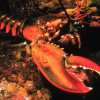A magnetism-detecting molecule that might enable animals to navigate using the planet's magnetic field has been discovered by Chinese scientists.
It's been known for many years that a range of different species, including bats, birds and even bacteria, are sensitive to the Earth's magnetic fields.
This likely accounts for the homing instincts of pigeons and the breeding patterns of fish salmon and eels. But exactly how animals like these can actually register and respond to magnetic fields remained obscure and no convincing mechanism has been put forward.
Now writing in Nature Materials, Chinese researcher Siying Qin together with colleagues at Peking University, have uncovered a molecule present in the eyes of many species which, they say, might be the missing link that makes magnetism visible to certain animals.
Working with fruit flies, the team trawled through the entire fly genome searching for genes that would encode a protein with the ability to bind iron, is normally active in the brain or eyes, and has the ability to link with with another chemical called a cryptochrome, which has been shown previously to play a role in magnetic detection.
This "gene screen" threw up about 100 possible candidates that largely fitted the bill, but the product of only one of the genes, which the team have now dubbed "MagR" - for magnetic receptor, was capable of linking up with the cryptochrome molecule.
The team were able to prepare samples of the gene product, the MagR protein. Seen down an electro microscope, individual molecules of MagR link together and locks onto to iron salts to produce a rod-like structure. Surrounding this rod are molecules of the cryptochrome protein.
More compelling was the observation that a significant proportion the particles appeared to be lining up spontaneously with the Earth's magnetic field, and when the team applied an additional external magnetic field, even more of the particles flipped into alignment.
The Peking team speculate that the MagR's iron-rich core is sensitive to magnetic fields, which alter its chemistry, altering the light-sensitivity of the linked cryptochrome molecule.
In this way, the eye "sees" the magnetic field both in terms of its intensity and its inclination.
In support of this suggestion, the team were also able to show that their MagR protein is present in the retinae of pigeons. And, intriguingly, when they looked at the DNA records for other animals, the MagR gene is also present right across the animal kingdom, from butterflies, pigeons and mole-rats to minke whales and even humans.
"MagR represents a novel biocompass-like model and might help to resolve the mystery of animal magnetoreception," they say.
- Previous Antibiotic apocalypse
- Next Supergenes can determine behaviour










Comments
Add a comment